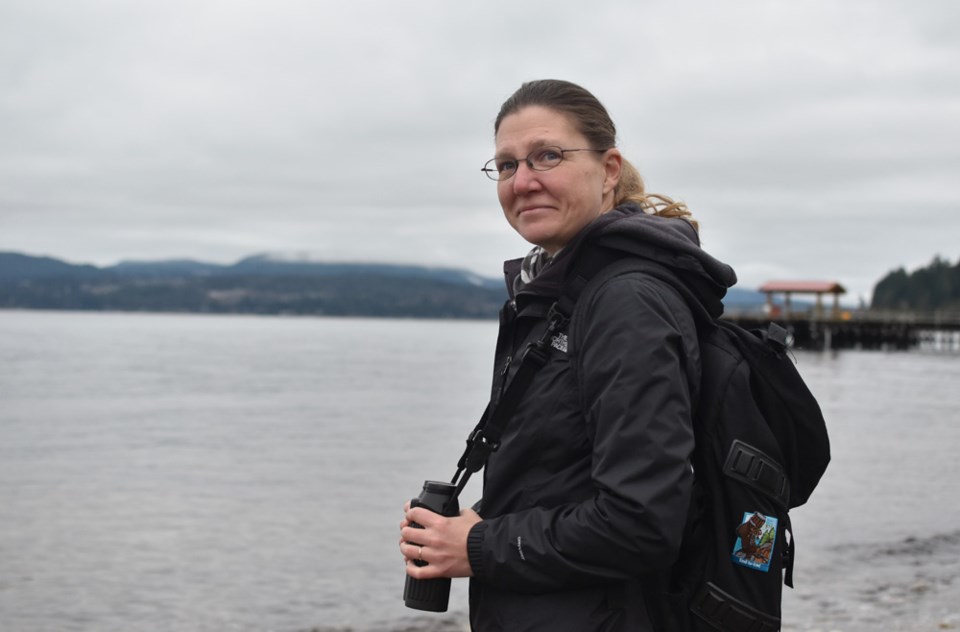A pair of hikers with Sunshine Coast connections have completed the first leg of their walk across Canada to inspire people to protect birds and their habitats.
Sonya Richmond and her partner, Sean Morton, had hoped to make it to Toronto but after walking 3,000 kilometres across five provinces, starting at the easternmost point of Newfoundland last June, their journey froze in Rivière-du-Loup, Que.
By the second week of November, winter had arrived, bringing with it several inches of snow and plunging temperatures – a challenge for the pair, who slept in a tent most nights. “It was absolutely beautiful, but we did not have winter gear, so we decided to stop,” said Richmond, who spoke with Coast Reporter near her parents’ home in Davis Bay.
Now they must wait until the snow melts before resuming their hike, with the resolution of making it to Manitoba before the end of 2020.
Richmond said they fell short of their distance goal because of another important one: “A lot of the reason we were slower than we thought was because [of] our outreach.”
An ornithologist and GIS analyst with the charity Birds Canada, she and Morton sold their house in Ontario to make the cross-Canada trek along the 24,000-kilometre Great Trail, relying on donations and sponsorships. They are the first people to attempt the hike for a cause.
As they walked with the seasons, they traced the epic journeys so many migratory birds take through the Maritimes. Newfoundland’s boreal forests teamed with brightly coloured migratory warblers in late spring. They observed shorebirds feasting on tidal shrimps exposed on vast mudflats by some of the largest tides in the world as they passed through the Bay of Fundy in early summer. By the time they reached the shores of the Saint John River in New Brunswick, ducks, geese and other waterfowl were stopping to feed as they flew south. “Even though we’ve been to most of the Maritime provinces driving through, it just looks totally different when you walk,” said Richmond, who said as autumn set in, they were trekking 40 kilometres each day, walking into the evenings as daylight dwindled.
As they walked, they spread their message of the power of citizen science, and how simple actions, such as installing backyard feeders, can protect birds – messages that hit home for the people they met along the way, who spoke of troubling observations in their own backyards. “We heard the same story over and over. People would hear what we were doing and they would ask us, where have all the birds gone?”
“Our bird populations are just crashing,” said Richmond, citing a study published in Science in 2019 that described a “staggering” net loss of approximately three billion birds, or 30 per cent compared to 1970 populations.
“I’ve been surrounded by scientists and ecologists. We live and breathe this stuff every day, but people all across the Maritimes at least, are seeing it in real life and they’re willing to do something to help.”
Since June, Richmond and Morton have shared their message directly with at least 300 people, have given 15 talks at parks, universities and even at the popular outdoor retail chain Mountain Equipment Co-op. They stopped once a week to upload photos of the more than 154 species of birds they have identified, and they posted updates on social media. “It was completely worth it,” said Richmond, of the slower-than-expected pace and outreach efforts.
“Our hope is that once you start taking small steps you’re encouraged and inspired to keep doing more to help. You look at what’s there, it’s all fantastic, it’s beautiful, it’s completely worth saving, but you have to see it first.”



